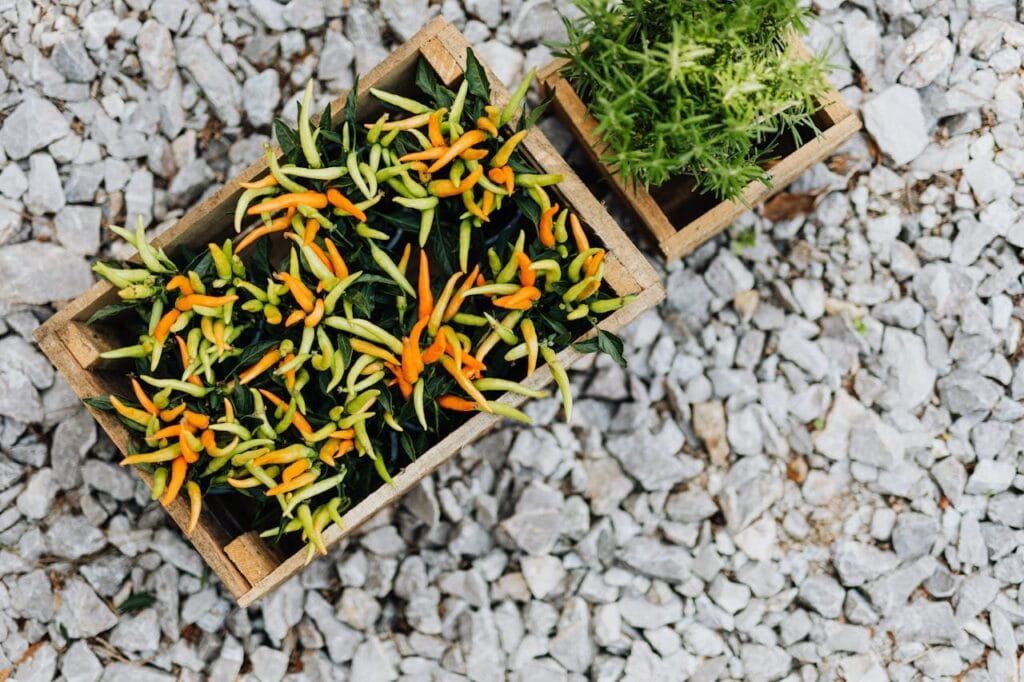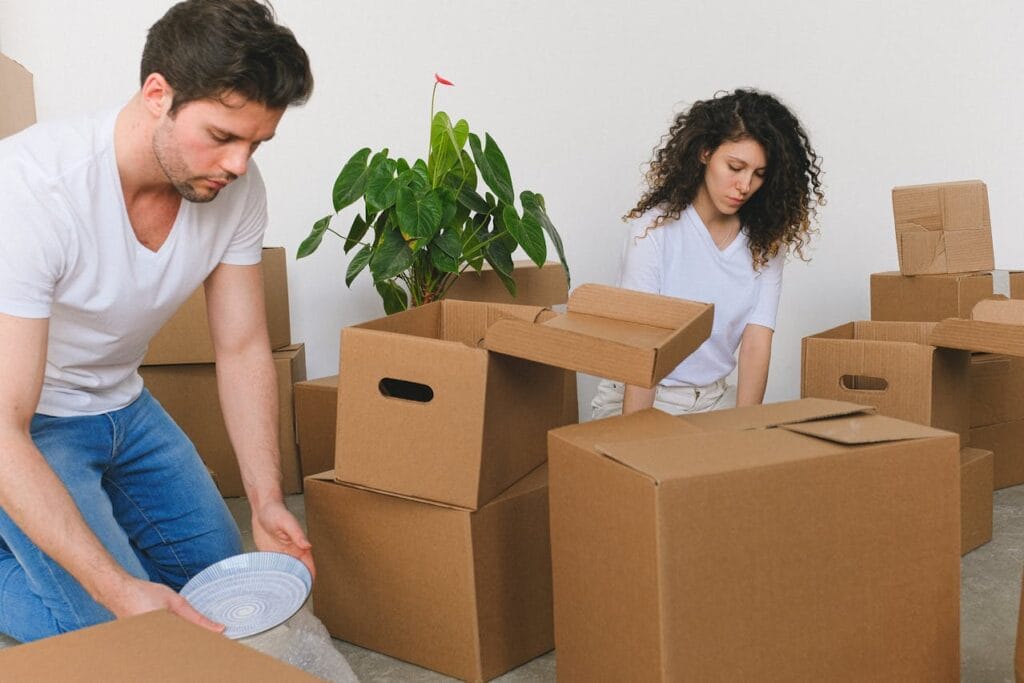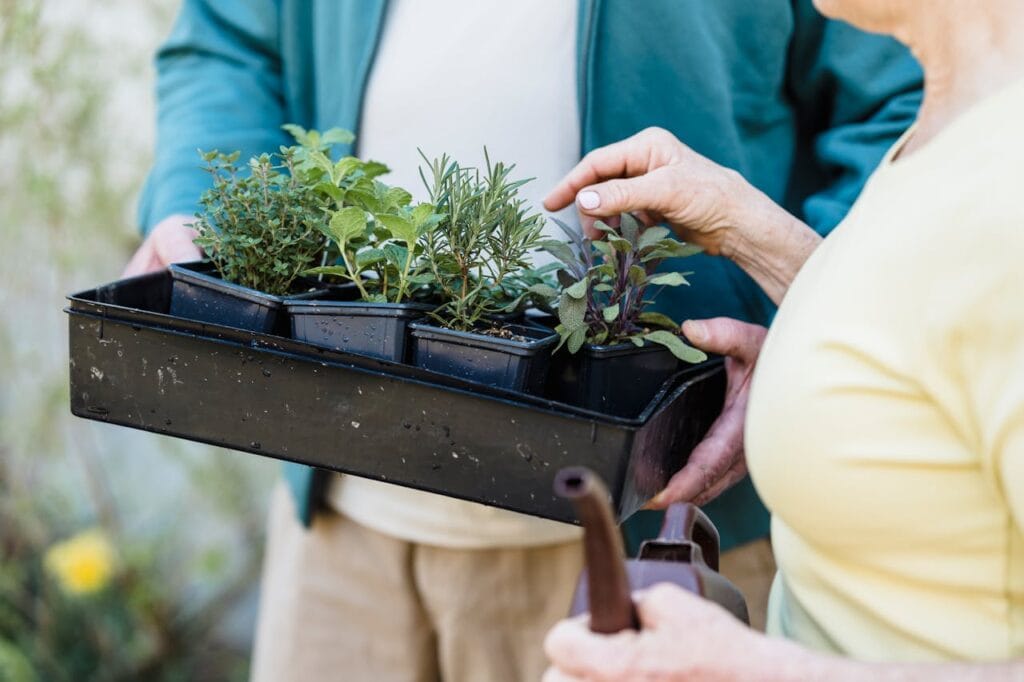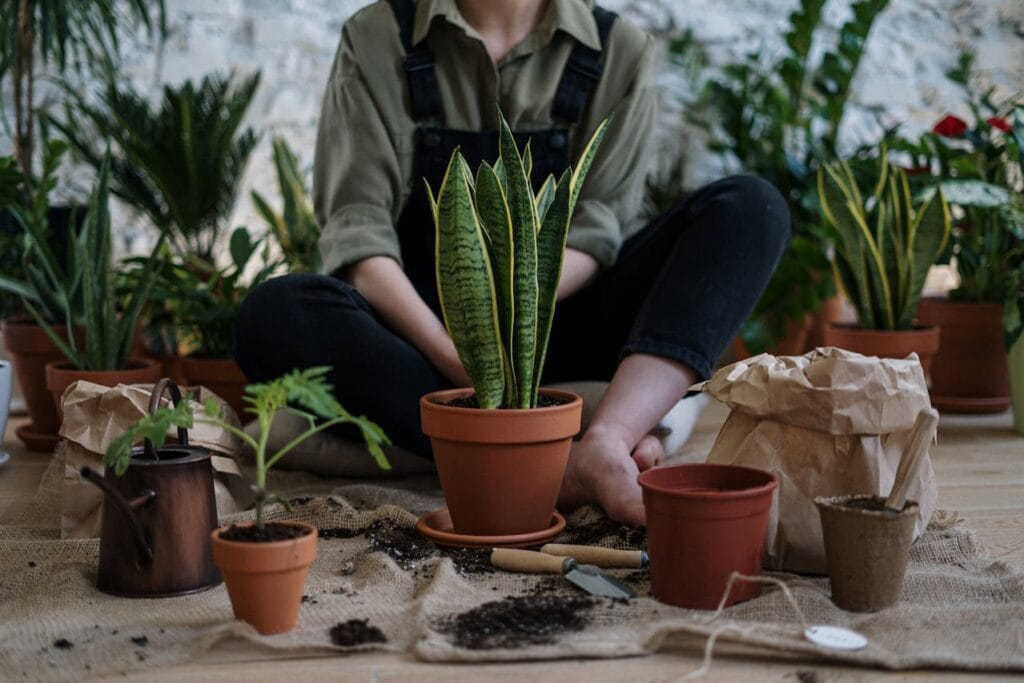
Relocating often leaves you with boxes, bubble wrap, and other packing materials scattered around. Instead of throwing them away or storing them, you can repurpose your moving supplies into a garden. This approach saves money, reduces waste, and gives those materials a second life. Many common moving items are already perfect for reuse. Cardboard, plastic tubs, and even packing paper can be repurposed into sustainable solutions. If you’re settling into a new place, this method helps you create something fresh while cleaning up what’s left from your move.
Choose the Right Supplies
Start by checking what’s clean and usable. Boxes that are wet, greasy, or torn won’t work. Focus on sturdy cardboard, clean packing paper, foam sheets, and plastic bins. Wardrobe boxes are tall and rigid, ideal for vertical planters. Smaller boxes can be used as seed starters or shallow herb beds. Foam and bubble wrap help line containers for insulation and root protection.
Importantly, avoid materials with heavy inks or wax coatings. These might leak harmful substances into the soil. Newsprint is suitable if it’s black and white and untreated. Packing peanuts should be avoided unless they’re marked as biodegradable. You can also use shredded paper as a compost ingredient, but avoid using paper with glossy finishes. Sort your supplies into categories based on their intended function: containers, lining, mulch, compost, or support structures.
When it comes to how to pack fragile items safely for a move, it’s smart always to reuse packing items to keep delicate stuff safe while moving. Use bubble wrap, towels, and soft paper for glasses, ceramics, or electronics. Reuse these materials later in your garden project. Plastic ties and zip bags from moving can be used to store seeds or garden tools. Don’t toss them. Stick them in a drawer until needed.

Easily Turn Your Moving Supplies into a Garden
With some creativity, you can transform your moving supplies into a thriving garden that works well in small spaces or large backyards. You can build planters from cardboard boxes by cutting them to your preferred size, reinforc
ing the bottom with tape, and lining them with a plastic bag that has holes poked through for drainage. If you have clear bins, they double as mini greenhouses for seedlings. Shoe boxes are ideal for shallow-rooted greens, such as lettuce.
For starters, wardrobe boxes are tall enough to hold climbing plants. Cut out the front and fill the inside with a mix of compost, soil, and straw. Additionally, old stretch wrap can help retain moisture in seed-starting trays. Just wrap the top until the seeds sprout, then remove it. Packing paper works great for weed control under raised beds. Flatten it, wet it, then layer soil on top.
Plastic containers from the move are also useful for balcony gardening. Drill drainage holes, fill with soil, and add your favorite herbs. You can use leftover tape to mark plant rows or as weatherproof labels. Simply write the plant name on the tape and stick it to the edge of the box or a suitable surface. This helps you stay organized and makes your reused garden look clean and planned. You can even line a box with bubble wrap to help regulate temperature and prevent roots from overheating or freezing.
Boost Your Soil Using Recycled Materials
Start a compost pile with shredded cardboard and packing paper. These brown materials add carbon, which balances the nitrogen from food waste. Ensure pieces are small so they break down more quickly. First, you can soak strips of paper or cardboard in water for a few hours to make them easier to mix into compost—layer with vegetable peels, coffee grounds, and grass clippings. Rotate regularly to speed up decomposition.
Secondly, use natural fiber blankets or towel scraps as mulch. Lay them over the soil to reduce evaporation and block weeds. Foam sheets can also be cut to fit pots as insulation barriers, especially in colder seasons. Thirdly, old egg cartons from packing fragile items can be filled with soil and used as a nursery for seeds. Once the seedlings grow, you can cut each section and plant it directly into the soil. Lastly, if you’re using plastic tubs or containers as planters, test the soil’s pH. Some plastics may have a detrimental effect on the soil over time, particularly in hot environments.

Create a Garden Layout with What You Have
You don’t need fancy tools or blueprints, nor do you need to sacrifice convenience. Lay out your boxes on the ground to plan the shape of your garden. Tall boxes can define corners, while smaller ones can form rows or squares. Use old packing tape to draw outlines on pavement or patios. This allows you to decide where to place planters or where you might want space for walking. Use leftover shipping labels or printed moving stickers as plant tags.
In a line manner, stick cardboard into the ground to form low walls for a raised bed—stack layers of cardboard between wooden boards for extra insulation. You can also use broken-down boxes under beds to smother grass or weeds. Roll up used wrapping paper tubes and insert them into the soil as supports for bean plants or tomatoes. They’re sturdy enough for a season and compostable.

Maintain Your Eco-Friendly Garden Year-Round
Even after your first season, moving supplies can continue to help. During colder months, cover young plants with bubble wrap domes to trap heat. Use plastic wrap to shield planters from wind or rain. You can collect packing paper and use it to line walkways or garden paths. It breaks down over time and stops weeds. Foam corner protectors can be cut and added as insulation to pots sitting directly on concrete.
Additionally, save any remaining supplies for the next planting season. Store flattened boxes in a dry, well-ventilated area. Roll up the bubble wrap and secure it with rubber bands. Wrap vulnerable pots with foam before frost hits. This helps reduce temperature shock and keeps perennials alive through winter. Keep your bins and containers clean to prevent mold or pests between uses.
Final Thoughts
There’s no need to let moving waste pile up. With simple steps, you can repurpose what’s already in your hands. Try new layouts, experiment with containers, and grow fresh food using discarded materials. By choosing to turn your moving supplies into a garden, you help the planet and save money. Whether you’re planting in a yard or on a balcony, your garden can start with what most people throw away.
